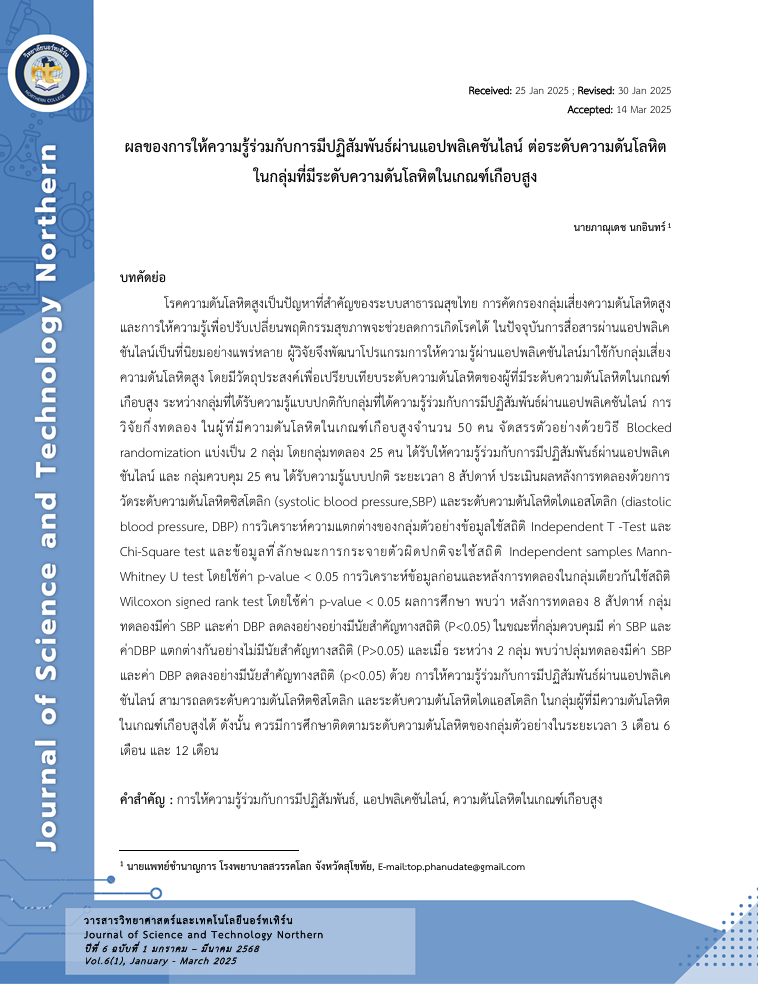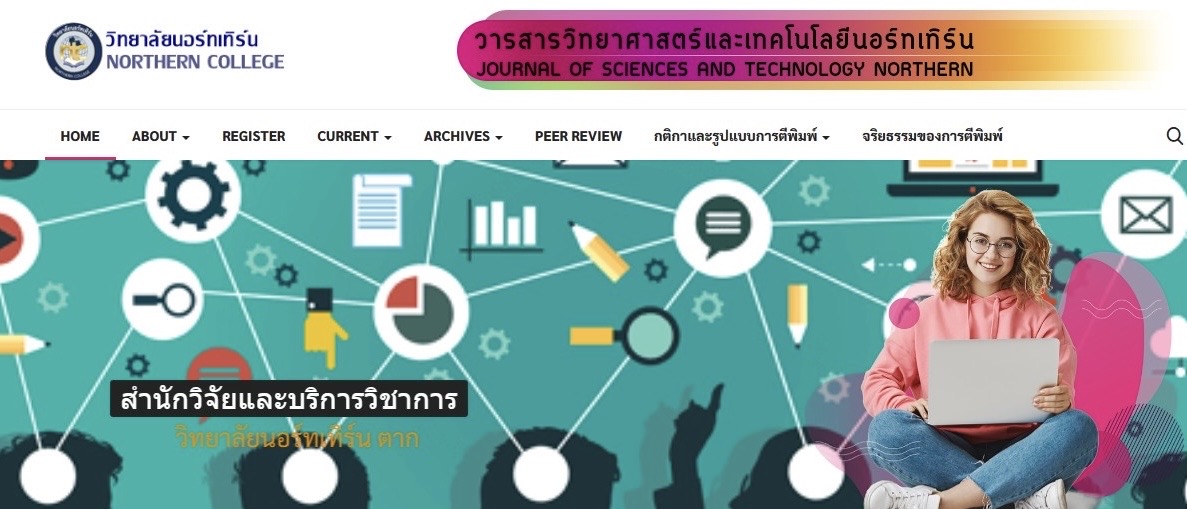Effects of Interactive Health Education via Line Application on Blood Pressure Level in High Normal Blood Pressure Group.
Keywords:
Interactive Health Education, LINE application, High Normal Blood Pressure.Abstract
Abstract
Hypertension is a significant public health issue in Thailand. Screening at-risk groups for hypertension and providing education to promote health behavior changes can help reduce the incidence of the disease. Currently, communication via the LINE application is widely popular. Therefore, the researcher developed an educational program through LINE to assist individuals at risk of hypertension. To compare the blood pressure levels of individuals with high normal blood pressure group between the group receiving standard education and the group receiving education combined with interaction through the LINE application. A quasi-experimental study was conducted with 50 individuals with high normal blood pressure group. The sample was randomly assigned using blocked randomization into two groups: the experimental group (25 individuals) received education along with interaction through LINE, while the control group (25 individuals) received standard education. The intervention lasted 8 weeks. Post-intervention outcomes were assessed by measuring systolic blood pressure (SBP) and diastolic blood pressure (DBP). Statistical analysis was performed using Independent T-Test, Chi-Square test, and Independent samples Mann-Whitney U test for data with non-normal distribution, with a significance level of p-value < 0.05. Data before and after the intervention within the same group were analyzed using the Wilcoxon signed-rank test with a p-value < 0.05. After the 8-week intervention, the experimental group showed a statistically significant reduction in both SBP and DBP (p<0.05). In contrast, the control group showed no significant change in SBP and DBP (p>0.05). When comparing the two groups, the experimental group showed a significant reduction in both SBP and DBP (p<0.05). Providing education combined with interaction through the LINE application can effectively reduce systolic and diastolic blood pressure in individuals with high normal blood pressure group. Further studies should follow up on blood pressure levels of the sample group at 3, 6, and 12 months after the intervention.
References
World Health Organization. (2021). Hypertension [Internet]. Retrieved October 19, 2020, from https://www.who.int/news-room/fact-sheets/detail/hypertension
วิชัย เอกพลากร. (2564). การสำรวจสุขภาพประชาชนไทยโดยการตรวจร่างกายครั้งที่ 6 พ.ศ. 2562 – 2563. กรุงเทพมหานคร: อักษรกราฟฟิคแอนต์ดีไซน์.
สุพัตรา ศรีวณิชชากร. (2560). สถานการณ์การป่วยและการตายด้วยโรคไม่ติดต่อเรื้อรัง (โรคเบาหวาน ชนิดที่ 2). อังศินันท์ อินทรกำแหง (Ed.), ความรอบรู้ด้านสุขภาพ: การวัดและการพัฒนา (pp. 45-56). กรุงเทพมหานคร: บริษัท สุขุมวิทการพิมพ์ จำกัด.
ศุภศิลป์ กุลจิตต์เจือวงศ์. (2556). ไลน์รูปแบบการสื่อสารบนความสร้างสรรค์ของสมาร์ทโฟน: ข้อดี และข้อจำกัดของแอปพลิเคชัน. วารสารนักบริหาร, 12(3), 45-60. มหาวิทยาลัยนานาชาติแสตมฟอร์ด.
Thai Hypertension Society. (2008). GUIDELINE IN THE TREATMENT OF HYPERTENSION.
Fisher, J. D., & Fisher, W. A. (1992). Changing AIDS-risk behavior. PSYCHOLOGICAL BULLETIN, 111(3), 455-474. https://doi.org/10.1037/0033-2909.111.3.455
Makkaew, A., Moolsart, S., & Boonreungset, M. (n.d.). Effectiveness of a motivational enhancing program via electronic communication for hypertension prevention in high-risk persons. JOURNAL OF PUBLIC HEALTH, 32(3), 215-230.
รุ่งนภา อาระหัง. (2561). The effects of health literacy enhancement program on hypertensive prevention behavior of pre-hypertension. JOURNAL OF HEALTH EDUCATION, 509-526.

Downloads
Published
How to Cite
Issue
Section
License

This work is licensed under a Creative Commons Attribution-NonCommercial-NoDerivatives 4.0 International License.






